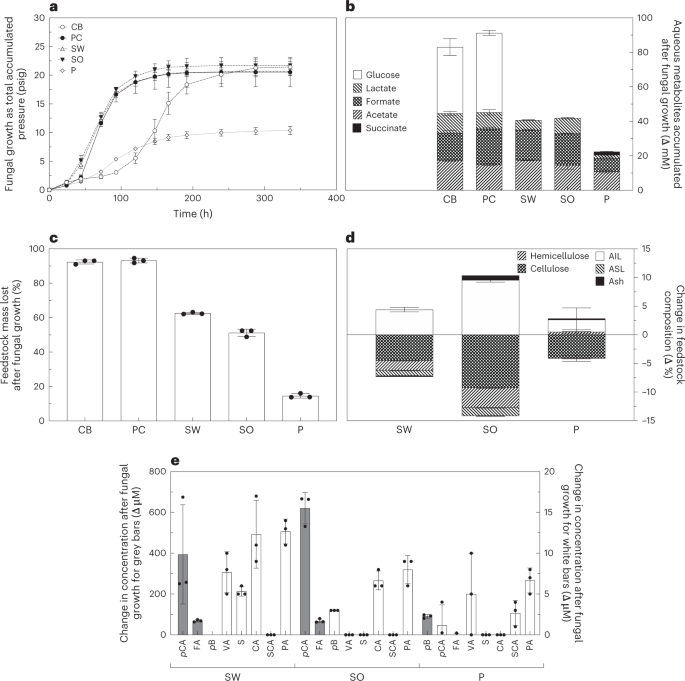強靭な木質リグニンを嫌気性環境で分解できることを研究者が証明 Researchers prove that tough, woody lignin can be broken down in an anaerobic environment
2023-03-09 カリフォルニア大学サンタバーバラ校(UCSB)
これにより、植物の価値ある繊維やその他の分子をバイオ燃料や化学品に変換することが可能になる。今後の課題は、どのように分解されるのかを解明することである。
<関連情報>
- https://www.news.ucsb.edu/2023/020865/deconstructing-lignin
- https://www.nature.com/articles/s41564-023-01336-8
嫌気性菌類によるリグニンの分解 Lignin deconstruction by anaerobic fungi
Thomas S. Lankiewicz,Hemant Choudhary,Yu Gao,Bashar Amer,Stephen P. Lillington,Patrick A. Leggieri,Jennifer L. Brown,Candice L. Swift,Anna Lipzen,Hyunsoo Na,Mojgan Amirebrahimi,Michael K. Theodorou,Edward E. K. Baidoo,Kerrie Barry,Igor V. Grigoriev,Vitaliy I. Timokhin,John Gladden,Seema Singh,Jenny C. Mortimer,John Ralph,Blake A. Simmons,Steven W. Singer & Michelle A. O’Malley
Nature Microbiology Published:09 March 2023
DOI:https://doi.org/10.1038/s41564-023-01336-8

Abstract
Lignocellulose forms plant cell walls, and its three constituent polymers, cellulose, hemicellulose and lignin, represent the largest renewable organic carbon pool in the terrestrial biosphere. Insights into biological lignocellulose deconstruction inform understandings of global carbon sequestration dynamics and provide inspiration for biotechnologies seeking to address the current climate crisis by producing renewable chemicals from plant biomass. Organisms in diverse environments disassemble lignocellulose, and carbohydrate degradation processes are well defined, but biological lignin deconstruction is described only in aerobic systems. It is currently unclear whether anaerobic lignin deconstruction is impossible because of biochemical constraints or, alternatively, has not yet been measured. We applied whole cell-wall nuclear magnetic resonance, gel-permeation chromatography and transcriptome sequencing to interrogate the apparent paradox that anaerobic fungi (Neocallimastigomycetes), well-documented lignocellulose degradation specialists, are unable to modify lignin. We find that Neocallimastigomycetes anaerobically break chemical bonds in grass and hardwood lignins, and we further associate upregulated gene products with the observed lignocellulose deconstruction. These findings alter perceptions of lignin deconstruction by anaerobes and provide opportunities to advance decarbonization biotechnologies that depend on depolymerizing lignocellulose.


